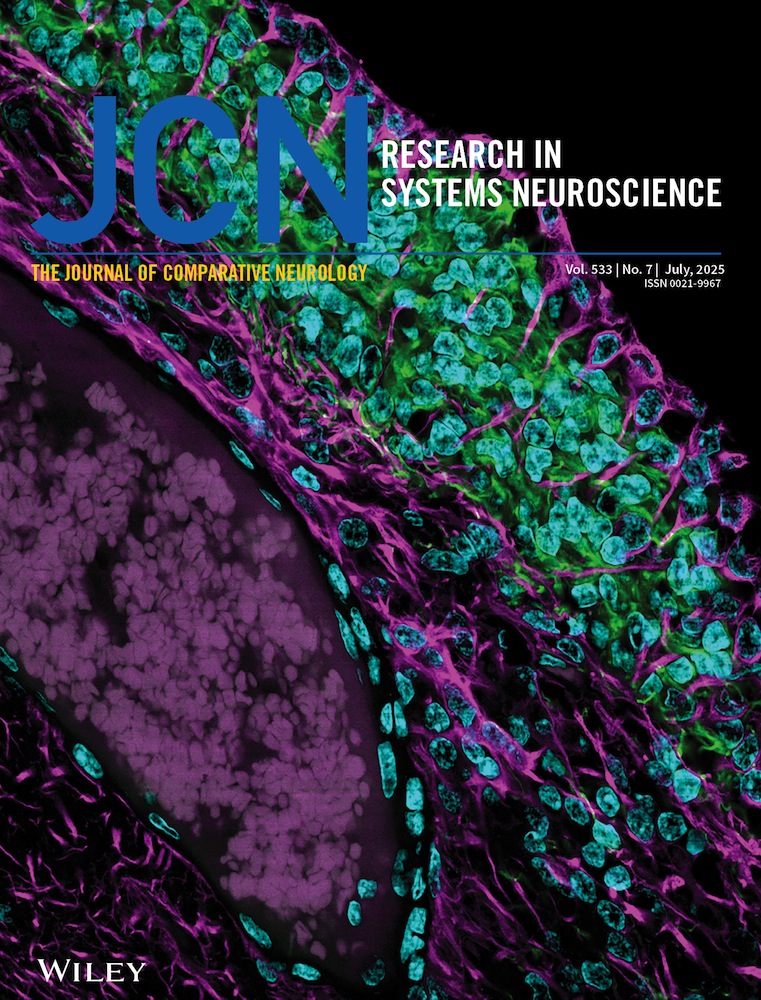Stellate cell development in the frog cerebellum during spontaneous and thyroxin-induced metamorphosis
Abstract
Stellate cell development was studied in the bullfrog cerebellum during spontaneous and thyroxin-induced metamorphosis using the Golgi-Kopsch method and electron microscopy. Cells that possessed axosomatic synapses and resembled stellate cells were present even in the incipient molecular layer of the cerebellum in the premetamorphic tadpole. These cells may have originated from the early, transient wave of external granule cells that have been reported in the cerebellum of premetamorphic tadpoles in the first 6 months of development, and may constitute the variant population of stellate cells that are present later during development or the degenerating cells that have been observed during metamorphosis as scattered dying cells in the molecular layer.
Typical stellate cells, whose development resembled the genesis and differentiation of stellate cells in birds and mammals, were initially observed at the outer border of the molecular layer that is adjacent to the external granular layer during the onset of metamorphosis. These stellate cells were bipolar with processes extending in a plane perpendicular to elongating parallel fibers, and with progressive development, became multipolar with dendrites oriented in various directions with respect to the pia. Stellate cell axons innervate the dendrites and somata of Purkinje cells and other stellate cells, and can be categorized into two types: (1) axons with extensive branching near the soma of origin, and (2) long axons with few branches that occasionally terminate in the Purkinje cell layer. Atypical neurons that did not resemble typical stellate cells were also present in the molecular layer; these might be classified as a stellate cell variant.
The generation and differentiation of stellate cells can be-induced 1 to 2 years prematurely by administering thyroid hormone to premetamorphic tadpoles. Like most events of cerebellar histogenesis in the frog, stellate cell development also appears to be largely a thyroid-dependent phenomenon.




